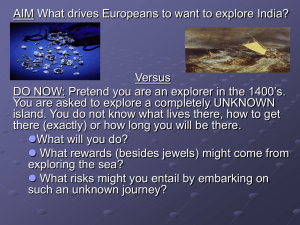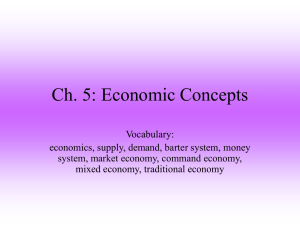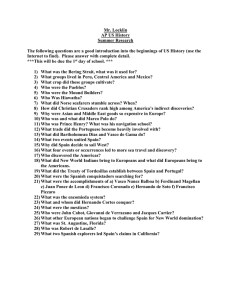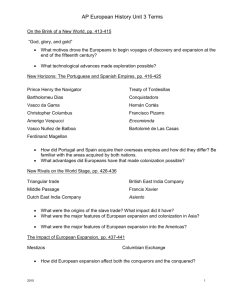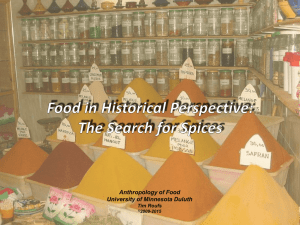1.1 EVOLUTION OF GLOBAL TRADE
advertisement
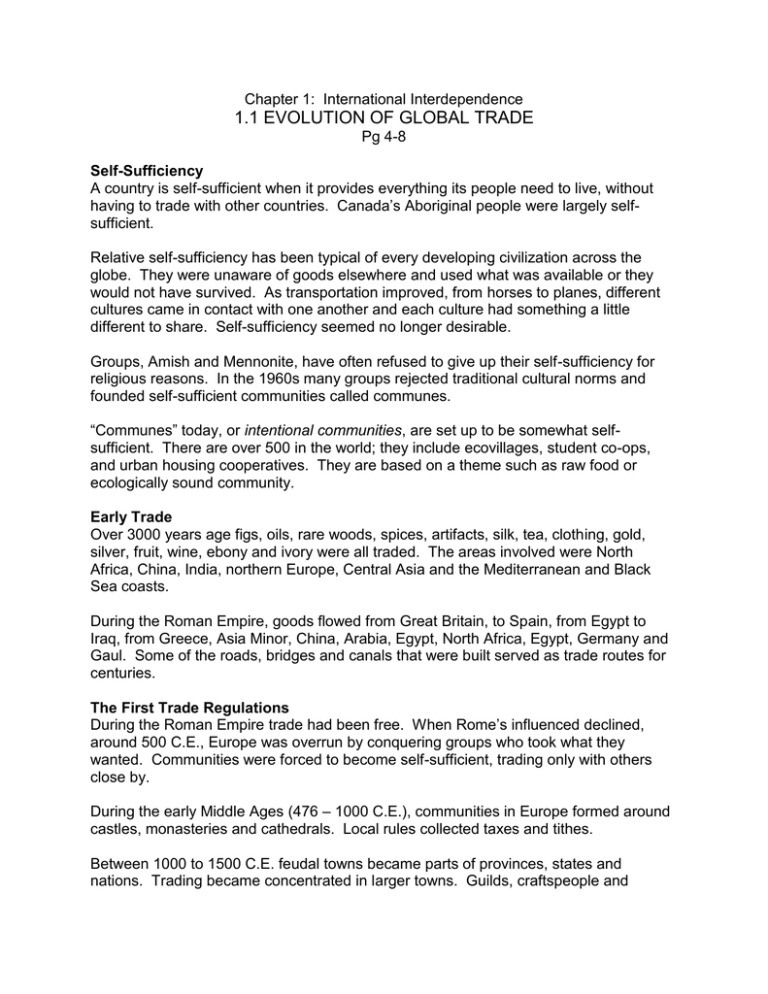
Chapter 1: International Interdependence 1.1 EVOLUTION OF GLOBAL TRADE Pg 4-8 Self-Sufficiency A country is self-sufficient when it provides everything its people need to live, without having to trade with other countries. Canada’s Aboriginal people were largely selfsufficient. Relative self-sufficiency has been typical of every developing civilization across the globe. They were unaware of goods elsewhere and used what was available or they would not have survived. As transportation improved, from horses to planes, different cultures came in contact with one another and each culture had something a little different to share. Self-sufficiency seemed no longer desirable. Groups, Amish and Mennonite, have often refused to give up their self-sufficiency for religious reasons. In the 1960s many groups rejected traditional cultural norms and founded self-sufficient communities called communes. “Communes” today, or intentional communities, are set up to be somewhat selfsufficient. There are over 500 in the world; they include ecovillages, student co-ops, and urban housing cooperatives. They are based on a theme such as raw food or ecologically sound community. Early Trade Over 3000 years age figs, oils, rare woods, spices, artifacts, silk, tea, clothing, gold, silver, fruit, wine, ebony and ivory were all traded. The areas involved were North Africa, China, India, northern Europe, Central Asia and the Mediterranean and Black Sea coasts. During the Roman Empire, goods flowed from Great Britain, to Spain, from Egypt to Iraq, from Greece, Asia Minor, China, Arabia, Egypt, North Africa, Egypt, Germany and Gaul. Some of the roads, bridges and canals that were built served as trade routes for centuries. The First Trade Regulations During the Roman Empire trade had been free. When Rome’s influenced declined, around 500 C.E., Europe was overrun by conquering groups who took what they wanted. Communities were forced to become self-sufficient, trading only with others close by. During the early Middle Ages (476 – 1000 C.E.), communities in Europe formed around castles, monasteries and cathedrals. Local rules collected taxes and tithes. Between 1000 to 1500 C.E. feudal towns became parts of provinces, states and nations. Trading became concentrated in larger towns. Guilds, craftspeople and merchant associations, became powerful; they controlled manufacturing and sale of products. Guilds controlled metal work, jewellery, food, cloth and salt. Foreign merchants had to pay a fee or were shut out. Trade and Exploration During the 15th and 16th centuries, Portuguese, English, Spanish, French and Dutch explorers set out across the Atlantic Ocean to find a westerly route to the rich spice markets of Asia. North and South America blocked their route. The Europeans carried out the claimed the land for the empires of Europe to expand their control over international trade. Wars were fought over trade routes, especially those that carried spices. Spices preserved food, and made it taste better. Healers used it as medicines. They also provided scents for a foul smelling world. Those who could fill the huge demand for spices could make huge profits. The Turkish Empire controlled many of the routes between Europe and India and China where the spices were. If European traders could get through, transportation was a problem as well as safety. It also took years to complete a journey. The Europeans began to look to the west. During the years of exploration and conquest, empires tried to acquire territory for exclusive rights to the resources of those lands and peoples. For example, 15th century Spain controlled Alaska, western US coast, Mexico, Central America, Chile, Columbia, Venezuela, Argentina and the Caribbean islands. They also controlled some of Africa and the Philippine Islands. Spain gained fish, agricultural products (sugar), taxes, stolen riches, gold and silver. Spain also introduced the slave trade in the Americas. Other European competed for control of the land and ignored the Aboriginal peoples who were already in those places. The Europeans competed to become more powerful and defend themselves against the other empires.
